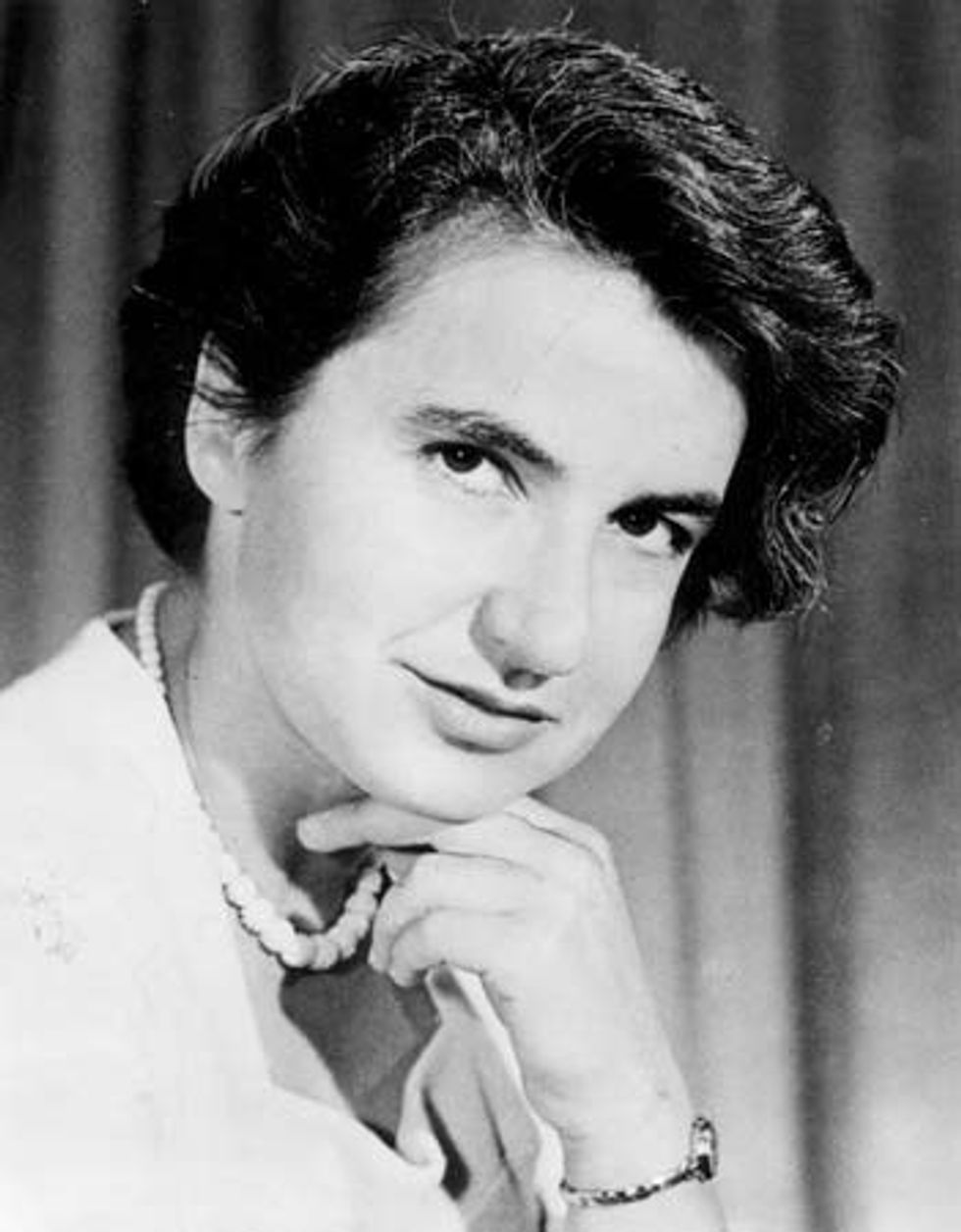In 1962, the famous James Watson and Francis Crick along with Maurice Wilkins received their Nobel Prize in Physiology or Medicine for elucidating the double helix structure of DNA. During biology lessons as early as elementary school, the names Watson and Crick are repeated over and over again, praising the bright young man in his twenties and his older companion for their genius breakthrough that won the race to find the structure. Some textbooks will touch on their competitors theories and contributions towards this breakthrough. However, few of us are taught in school the name of the woman who was right on their heels, the name of the woman who had the key piece of information.

Rosalind Franklin worked in a competing lab in the 1950s. She was tasked with using her expertise in x-ray crystallography, a skill she shared with another oft-forgotten scientist Dorothy Hodgkin whom Franklin would consult on her research, to find the structure of DNA. Initial squabbles stemming from a miscommunication claiming she would work alone with the assistance of graduate student Raymond Gosling from the head of the lab, John Randall, led Franklin to work with little communication with Maurice Wilkins who was intended to supervise her work. Working separately, Franklin took the now famous photograph 51 whose x-shaped pattern indicated the helical structure and prepared to publish a manuscript in Nature explaining her findings, a manuscript that almost explained the structure in its entirety.
However, before it was published, Wilkins revealed her data and Photograph 51 to Watson; within weeks, Max Perutz allowed Crick access to the Medical Research Council’s report that dove into more detail on the findings of Franklin. Watson claims that it was this piece of evidence that was the key to unlocking the structure in his memoir, The Double Helix: A Personal Account of the Discovery of the Structure of DNA.
Franklin and Gosling were asked to change their manuscript to explain how their data was "not inconsistent" with Watson and Crick’s conclusion while the men merely made a quick mention that their results were partially "stimulated by a knowledge of the general nature of the unpublished experimental results and ideas of Dr. M. H. F. Wilkins, Dr. R. E. Franklin, and their coworkers." Not that it was based upon her research. Just "stimulated by" research Franklin never even knew was shared beyond her lab.
This trend of diminishing the significance of her work would continue when Watson managed to avoid citing her once out of over 50 citations while speaking of RNA viruses, a subject she would become an expert on later in life, while accepting the Nobel Prize, an award he may not have had without Franklin’s Photograph. Though it was not possible for her to share the prize with the men due to her passing in 1958, one would expect at least an appropriate acknowledgement from all three during their acceptances. However, when Watson did mention her in his memoir, "The Double Helix," we see her portrayed as catty and even violent in between passages critiquing her appearance with a slight apology for his misjudgments tacked to the end.
With Franklin’s birthday approaching this week on July 25, we are provided with an opportunity to have an open discourse on the treatment of women in science. Franklin was known to have never treated her research as a competition and remained amicable to the men until the end of her life despite her posthumous mischaracterization in Watson’s memoir. So often women in science are mischaracterized as dowdy and temperamental as Franklin is throughout the book in a way to put down their accomplishments and make them little more than an object rather than brilliant, multifaceted scientists. Just over a year ago, we saw the same brutal mischaracterizations of women scientists by Nobel laureate Sir Tim Hunt who accused women of doing little more than falling in love with the men with whom they work and crying over criticism as a joke during a luncheon.
It’s time to end these absurd notions that were well and alive in Watson in the 1950s and remain in the heads of men today. We need to start celebrating the accomplishments of women like Rosalind Franklin, a woman who not only made it possible to discover the double helix of DNA but also made contributions towards the war effort in the 1940s with her early work on coals and made strides in the information available on RNA viruses through her later work on the tobacco mosaic virus. Rightfully accrediting women for their accomplishments in STEM fields without merely glorifying them as feminist icons will inspire young girls and boys alike to explore science without fear of discrimination. Rosalind Franklin was not just a “lady scientist.” She was a scientist.
It’s time to celebrate Rosalind Franklin as a heroine for women to aspire to be like in her strong personality and opposition to gender roles and a heroine for scientists to strive to be like in her accomplishments. As a young woman studying biology, I know I have been inspired by her since first learning her story on both a personal and professional level. Let's celebrate her life and her accomplishments that were so ignored during her time.
Happy birthday, Rosalind.




















